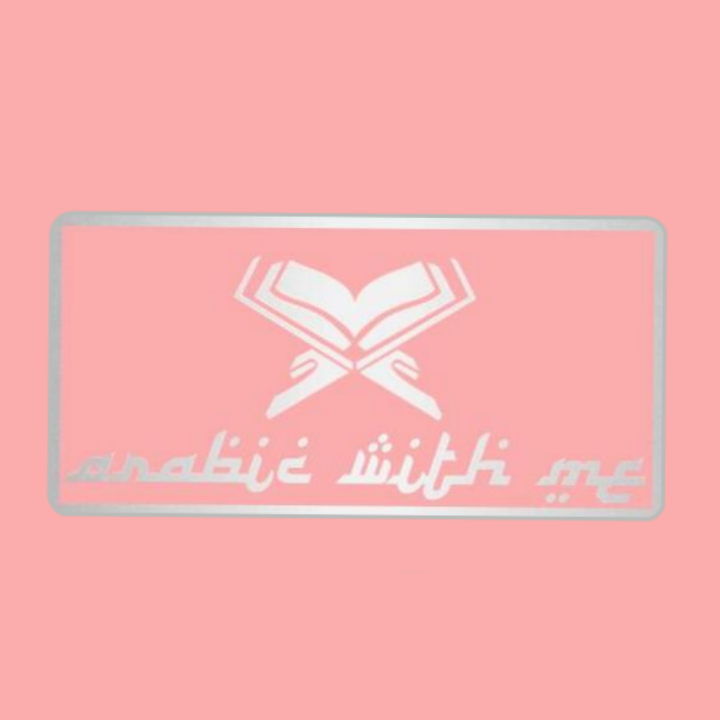Lesson 18 - The Attached Pronouns الضمائر المتصلة | The Five Nouns الاسماء الخمسة
- Arabic With Me

- Jan 18, 2023
- 3 min read
Today in sha’a Allah we will learn about the attached pronouns.
To revise, we said that there are two types of pronouns in the Arabic language:
Detached Pronouns الضَّمَائِرُ الْمنْفَصِلَةُ
Attached Pronouns الضَّمَائِرُ الْمُتَّصِلَةُ
One should know by now the 14 detached pronouns.
Attached Pronouns الضَّمَائِرُ الْمُتَّصِلَةُ
The attached pronouns, as the name says, are attached to a word, and based on this we have:
Pronouns attached to a verb ( Object Pronouns ),
Pronouns attached to a harf jarr, and
Pronouns attached to a noun ( Possessive Pronouns )
We will in sha’a Allah learn step by step how they are attached to each word and rules related to the attaching of pronouns.
First what is important to know is that attached pronouns are used in mansoob and majroor state. Mansoob, when they are attached to a verb, and majroor when attached to a harf jarr and when attached to an ism.
The Possessive Pronouns
In English the Attached Pronouns (also called the Possessive Pronouns) are “words which show the possession (or relationship) of an object (or person) of something’ e.g., if we want to express the possession of a book we would say: “this book is hers”.
Similarly if a person wants to express his possession of a pen, he would say, “This pen is mine”. In Arabic however “The Possessive Pronouns” are suffixes (one or two letters attached at the end of a word) attached to the nouns only. They are not full-fledged words.
Here we can see the attached and detached pronouns PICTURE 1.

Based on this we have 14 pronouns that we can attach to a noun PICTURE 2

How do we attach a pronoun to a noun?
This is very simple.
First of all, there is no definite article AL at the beginning of the noun on which we are attaching the pronoun. The noun to which the pronoun is attached to is the MUDAF.
Secondly, depending on whose possession we are referring to, we attach the pronoun to it, and this attached pronoun will be the MUDAF ILAYHI. PICTURE 3

On PICTURE 4 is the same noun with an another pronoun, for 2nd person masculine singular.

On PICTURE 5 we can see the same noun with all other pronouns as mudaf, and the attached pronoun as mudaf ilayhi.

Now let us look at some of the differences between attached and detached pronouns PICTURE 6

The attached pronoun is always definite, they are fixed when attached to a noun, are used for either genitive or accusative case ( mansoob or majroor ), can be attached , as already mentioned to either a noun, harf jarr or verb.
For the 1st person singular, the attached pronoun ي ( my ) is the yaa’u al mutakallim ( yaa of the first person) and when the yaa is attached to a noun, the last harakah of the word to which it is attached to takes a kasrah, so it will be, for example on PICTURE 7

As a contrast, we see that the detached pronouns stand on their own, they are not attached as the name already says and they are mabny ( fixed ), definite and always marfoo’ ( always nominative case ).
NOTE: We are only talking right now about the singular nouns the pronouns are attached to, we have some rules related to the dual etc., but we will for now only focus on the singular nouns in sha’a Allah.
There are however 5 nouns which take a special rule when an attached pronoun is added to them, and those are called الاسماء الخمسة ( The Five Nouns ), which will be our next topic in sha’a Allah.
الاسماء الخمسة ( The Five Nouns )
In the Arabic language, there are 5 nouns whose states are denoted by letters:
For Nominative Case ( Marfoo’ ) with a و
For Accusative Case ( Mansoob ) with an ا , and
For Genitive Case ( Majroor ) with a ي
These 5 nouns are:
أَبٌ father
أَخٌ brother
حَمٌ father in law ( and in this form it is not used in the Qur’an )
فَمٌ mouth
ذُوٌ endowed with/ owner
We will show now for the singular the states and forms of those nouns in each case PICTURE 8

Here we can see 2 of the 5 nouns how they look like with each noun PICTURE 9

As we can see, the only time when this rule of adding an additional letter to one of those nouns does not apply, is when it comes to the 1st person singular.




Comments